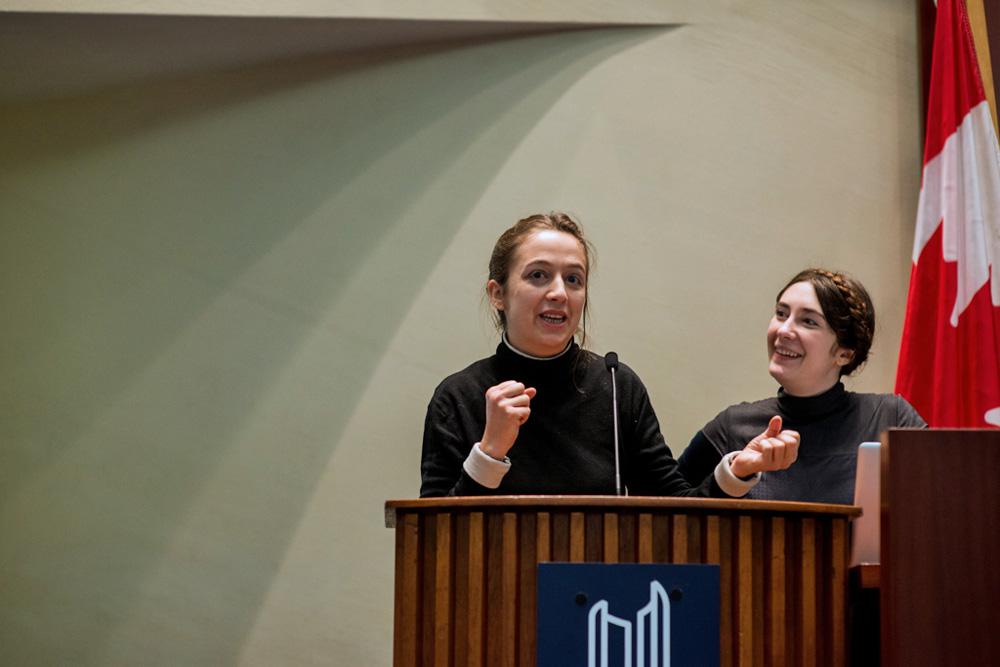On November 8, Part I of the symposium took place at Harbourfront Centre, and on November 9, Part II took place in Toronto City Hall Council Chambers.
Movement: Facilitating Artists was moderated by Lisa Steele and Kim Tomczak, artists and co-founders of Vtape, Toronto. It addressed the advantages (and pitfalls) of artist residencies at home and abroad; the artistic opportunities that emerge at times of economic crisis; the increasing role of art fairs in making artists better known nationally and internationally; and more.
The conversation participants included Abbas Akhavan, artist, Toronto; Isabelle Alfonsi, co-director, Galerie Marcelle Alix, Paris; Diane Borsato, artist, Toronto; Louise Hervé and Chloé Maillet, artists, Paris; Guillaume Leblon, artist and member of castillo/corrales, Paris; Jessica Bradley, director, Jessica Bradley Gallery, Toronto; Vincent Gonzalvez, project manager for visual arts, Institut français, Paris.
The Ecology of an Art Scene was part of the Canadian Art Foundation International Speaker Series and was presented in partnership with the Consulate General of France in Toronto as part of Paris-Toronto, a 10-month series highlighting contemporary art from France in the Greater Toronto Area. The symposium was sponsored by BMO Financial Group, with support from the Institut français.
The introductory text for this particular conversation was as follows: Mobility has always played a decisive role for artistic careers. In Martha Rosler’s words: “You have to be mobile if you want to be seen!” With the continuing and intensifying trend of globalization and transnational connectedness, mobility has gained tremendous importance for contemporary art in the twenty-first century. Comprehensive measures have been taken to increase the mobility of artists by integrating the issue prominently into cultural-policy agendas and through the establishment of high-profile funding schemes. These are further complemented by the dynamics of the international art market. This has resulted in unparalleled political and financial support, as well as an ever-increasing number of residencies, international collaborations, and institutions involved in exchange programs. Within this context, artists are often positioned as nomadic agents of change, advancing cultural diversity, intercultural dialogue and international understanding. How do these intentions relate to the realities of artists in transit? How does mobility affect individual artists’ trajectories and practices? What impact does the importation and exportation of artists have on Paris’s and Toronto’s local art scenes?
For more information, please visit canadianart.ca/paristoronto.

 Louise Hervé and Chloé Maillet discuss their frequently mobile art practice at The Ecology of an Art Scene / photo Emma McIntyre
Louise Hervé and Chloé Maillet discuss their frequently mobile art practice at The Ecology of an Art Scene / photo Emma McIntyre








